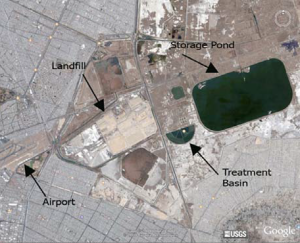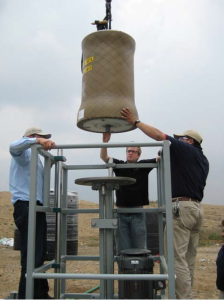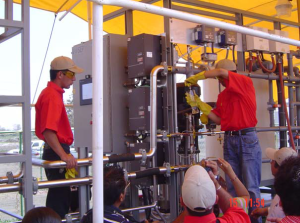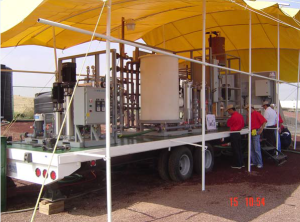VSEP Case Study – El Bordo Poniente, Mexico City
Written on February 2, 2015
 Once Mexico City’s only solid waste landfill, it is now closed to allow landfills to be opened further away from the residents of the city. However, the landfill was used to support a 9 million person population and so is still producing leachate wastewater and will continue to do so for some time.
Once Mexico City’s only solid waste landfill, it is now closed to allow landfills to be opened further away from the residents of the city. However, the landfill was used to support a 9 million person population and so is still producing leachate wastewater and will continue to do so for some time.
A VSEP system has been installed at the landfill, which utilises reverse osmosis (RO) through a vibrating membrane. The VSEP installed is automated with a 0.91m VSEP module and has roughly 42 square metres of membrane area. The leachate is pumped from the leachate storage pond to a tank before it passes through the VSEP system. This system recovers 80% of the waste water leachate.
 Due to the high vibrations, there is limited fouling on the membrane, which allows for high flow rates even when dealing with concentrated wastewater. VSEP is capable of working with raw wastewater with no pre-treatment and has a very small environment footprint and low operating cost.
Due to the high vibrations, there is limited fouling on the membrane, which allows for high flow rates even when dealing with concentrated wastewater. VSEP is capable of working with raw wastewater with no pre-treatment and has a very small environment footprint and low operating cost.
After the VSEP stage the filtered water goes through a standard spiral RO membrane system to reduce water contaminant levels below the discharge requirement. This double filtration process is able to output water that is far cleaner than any other treatment method currently available. The rejected concentrate can then be disposed of appropriately
The two stage process can reduce chemical oxygen demand from 10,000 mg/L to 17 mg/L and the total dissolved solids (TDS) in the leachate from 26,000 mg/L to 55 mg/L.
Leachate from landfills may be pumped into sewage systems but some waste may contain recalcitrant organics (pesticides). It can also be reinjected into the landfill, but none of those methods are as capable as RO at treating water and no RO systems are as effective as a VSEP system.
The images above have been copied from the VSEP case study for El Bordo Poniente
Categories Industry News | Tags: Filtration, Landfill, Landfill leachate, Leachate, Membrane technology, Vibratory Shear, Vibratory Shear Enhanced Process, VSEP


